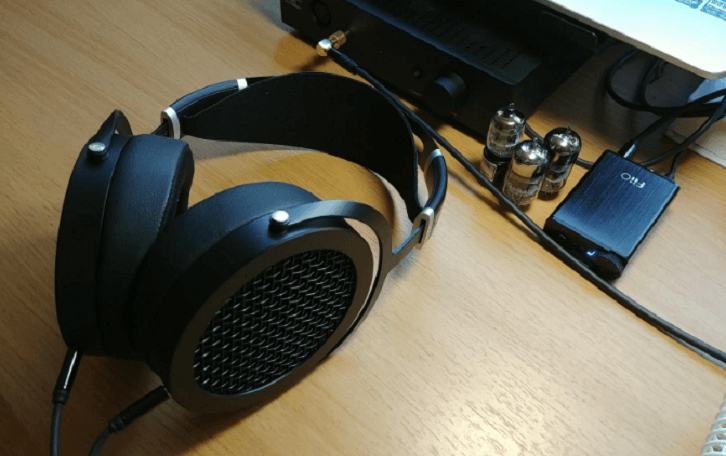How to Charge AirPods Without a Case
Discover the truth about how to charge AirPods without a case. Uncover myths, find alternatives, and safeguard your audio experience.

A great pair of headphones can go a long way when traveling, exercising or working in the studio. While there are many factors that can make a pair of headphones great, sound quality is chief among them. If you’re looking for excellent sound quality, you should definitely consider dual driver headphones.
Dual driver headphones are headphones that have two tiny speakers, or drivers, in each ear. One driver handles the low end, or bass frequencies, while the other driver handles the midrange and high frequencies.
The extra pair of drivers in dual driver headphones typically provides better sound quality than single driver headphones due to the clarity and accuracy of the additional frequencies they communicate.
In other words, single driver headphones only have one tiny speaker per ear that is responsible for communicating all of the complexities of different frequencies, while dual driver headphones have two per ear.
Headphone drivers are tiny speakers that create and “drive” sound into your ear canal.
Headphone drivers convert an electrical audio signal into sound waves that reverberate through the ear canal until they come into contact with the eardrum. The eardrum vibrates from the sound waves, undergoing an intricate process that results in auditory nerve signals reaching the brain, which we understand as sound.
The headphone driver is actually the most important part of the headphone because it is responsible for generating and communicating sound.
Since headphone drivers are the most crucial components of any headphones, it’s important to understand what they are made of and how they function.
Every headphone driver has a diaphragm, a device that converts energy from one form to another – in this case, electrical audio signals to sound waves.
The diaphragm generates sound waves from the vibration caused by voice coils. Whenever a current runs through the voice coils, the diaphragm vibrates, making sound waves.
The magnet is essential to the vibration of the diaphragm because without the permanent magnetic field that the magnet provides, a diaphragm would be unable to receive an electric charge.
There are several different types of headphone drivers. Due to the fact that these different drivers are often made with different materials, sound quality and build quality can vary, affecting the overall quality of a pair of headphones.
Understanding the processes that allow these drivers to function may be tricky for newcomers, but it will ultimately reveal the strengths and weaknesses of headphones that contain these drivers on the market.
Dynamic, or moving coil drivers use a process of magnetism and electromagnetism to cause the rapid movement of the voice coil and dome or cone-shaped diaphragm.
The magnet inside of a dynamic driver magnetizes the voice coil, causing it to create a magnetic field upon receiving current. Once the voice coil starts moving backwards and forwards, the diaphragm begins to move rapidly as well, displacing the air around it.
This rapid air displacement contributes to dynamic drivers’ ability to generate high volumes and large bass frequency response.
In a nutshell, the more air is displaced, the higher the volume and the bigger the bass.
The process of moving coils may seem complex to a layperson, but it’s actually a pretty simple mechanism. Because this mechanism functions easily, it doesn’t need a lot of power to get loud or bassy.
The downside of this type of driver is due to its structure and smaller size, the sound quality isn’t too great. The higher the volume gets, the more it distorts, with the bass frequencies typically swallowing the mids and highs.

HIFIMAN SUNDARA headphones have planar magnetic drivers.
Planar magnetic drivers also operate with magnetic fields. However, instead of using voice coils and a cone-shaped diaphragm, the planar magnetic drivers have a large, flat diaphragm design. The magnetic field activates the membrane of the diaphragm directly, instead of voice coils, to generate sound.
The larger diaphragms can accommodate more magnets, but the increased size of planar magnetic drivers makes them bulky and not very portable. Their size also requires more power to function properly, with some requiring external amplifiers.
The larger diaphragm also allows for higher sound quality.
Similar to the dynamic drivers, planar magnetic drivers displace a large amount of air, with excellent bass frequency response but without sacrificing clarity in the mid and high frequencies.
These drivers are often found in many high-end, open & closed back over ear headphones due their sound quality and build quality. But as with any pair of headphones, increase in sound quality often means increase in price.
Balanced armature drivers are the smallest drivers on the market and are only found in IEM’s (in-ear-monitors), due to their size.
The build of balanced armature drivers consists of a miniature arm (armature) in a coil of wire, sitting between two magnets, one on the top and one on the bottom. The magnetic fields the magnets create determines the movement of the arm.
The armature is “balanced” when it is centered between the two magnets without any force on it. The armature begins to pivot toward either magnet when electric current goes through the coil. The pivoting moves the diaphragm, thus producing sound.
The sound balanced armature drivers produce, however, is not very bassy because they do not displace air to generate sound, causing many IEM’s to have an additional dynamic driver to mitigate some of the bass frequency loss. These are known as “hybrid drivers,” which are more expensive, but we’ll get into that later.
Electrostatic drivers are the most expensive headphone drivers on the market. Due to their high prices and special amplification requirements, they are pretty rare.
When it comes to sound quality, these are also the best on the market, with near-flawless sound detail.
Electrostatic drivers function due to static electricity, which creates an electric field that causes movement in the diaphragm. As with other drivers we’ve seen, this movement generates sound.
What we haven’t seen from other drivers is the near-perfect sound production that electrostatics bring to the table, largely owed to their lack of harmonic distortion.
Magnetostriction or bone conduction drivers are used in headphones that, unlike other headphones, sit outside the ear.
Yes, that’s right. They do not cover your ears when you wear them but you can still hear sounds! Even deaf people can hear sounds with the help of bone conducting headphones.
Bone conduction drivers work by converting sound energy into vibrations. The vibrations interact with the bones on the side of your head, which send the vibrations to the cochlea, a part of the inner ear, which in turn picks up the sound data and sends it to the brain.
Bone conduction drivers are great for increased situational awareness (they don’t cover your ears) and for those with hearing disabilities.
While bone conduction drivers may seem revolutionary to those who have never heard of them, they have actually been around since Beethoven’s era, when he used a version of these drivers to listen to his piano.
They are also not revolutionary when it comes to sound quality. The sound quality is definitely nothing to brag about due to the lack of air displacement.
As I mentioned earlier, hybrid drivers are balanced armature drivers that have an additional dynamic driver to help with air displacement.
Hybrid drivers are dual drivers that use two or more drivers to deliver a well-received sound signature. The use of two or more drivers ensures great frequency response for your headphones, presenting the audio signals with detail, vibrance, and warmth.
The short answer is yes.
There are many reasons why dual drivers are (usually) better than single drivers, but here are some of the more obvious ones:
With more drivers, the range of frequencies that headphones can communicate is bigger and more detailed, allowing for higher frequencies to be reached without distortion.
A single driver has to navigate all of those frequencies on its own and just isn’t built to handle that higher range.
A helpful way to understand the sound quality benefits of dual drivers, or headphones with multiple drivers, is to think of each driver as having its own responsibility, or at least sharing responsibility.
In dual driver headphones, one driver is responsible for the bass frequencies and the other is responsible for highs and mids. The sound quality is much better than a single driver because the load is being shared more evenly.
In addition to the richness of sound, dual drivers can also produce louder audio, increasing overall sound quality.
More drivers = a better pair of headphones. This is because of the reasons I have already mentioned, but also because dual driver headphones do not require additional audio equipment to improve quality.
If you have a pair of headphones with dual drivers or multiple drivers, chances are they will sound great on their own.
Again, the answer is yes.
While dual driver headphones are going to improve your listening experience, they do come with some downsides, or at least some things to consider.
Dual driver headphones are going to be more expensive than single driver headphones. However, you’re paying for an increase in sound quality, which often justifies the price increase.
Dual driver headphones are bulkier because they contain more drivers, making them bigger than single drivers.
Dual driver headphones are headphones with two drivers in each ear. These drivers are tiny speakers that increase overall sound quality by communicating a greater range of frequencies without distorting.
The great sound quality of dual driver headphones makes them some of the best on the market. They are a great tool for audio recording sessions and a lovely device for audiophiles looking for accuracy and clarity when listening.